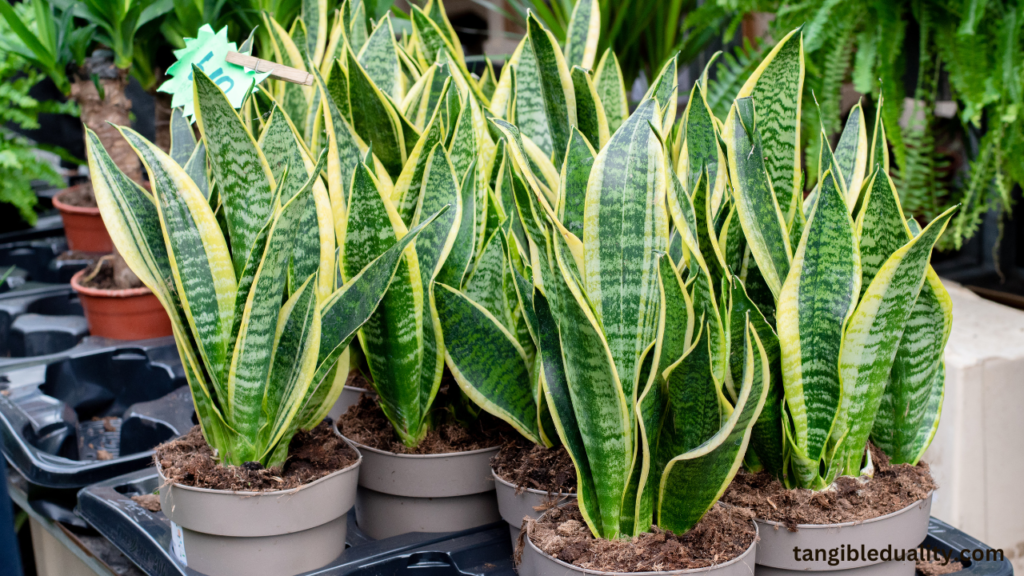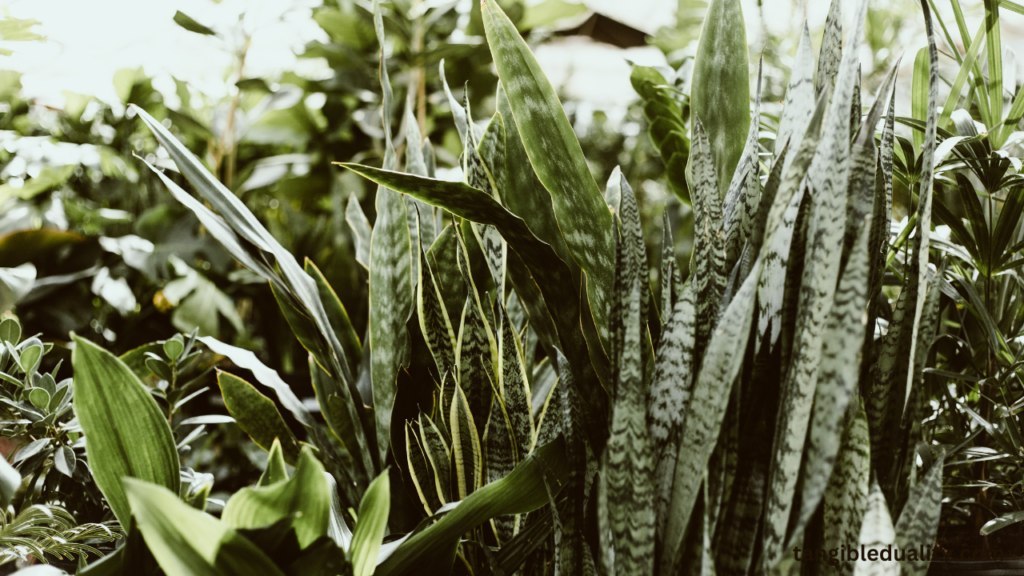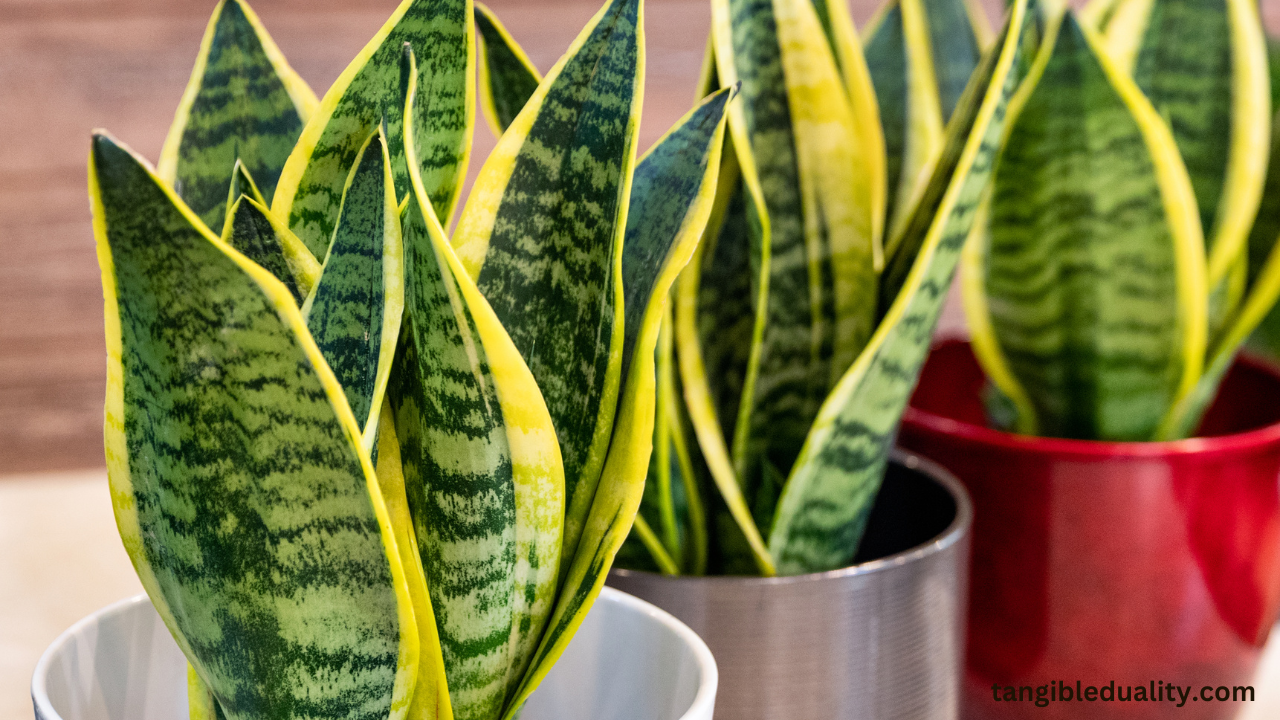For indoor gardening, very few plants can compete with the variety and elegance of the snake plant, which is known by its scientific name, Sansevieria. Due to its remarkable foliage appearance and the fact that it requires very little maintenance, the snake plant has become a common fixture in homes and workplaces all over the world.
You may take your experience of indoor gardening to the next level by becoming an expert in the art of caring for your indoor snake plant. This is true regardless of whether you are a seasoned plant enthusiast or beginning gardener.
With the help of this comprehensive guide, we will go deeper into the complexities of snake plant care, providing you with the information and skills necessary to nurture your green friend to perfection.

Understanding the Snake Plant
Before embarking on your journey of snake plant care, it’s essential to acquaint yourself with the plant’s unique characteristics. Originating from arid regions of West Africa, the snake plant has evolved to thrive in conditions of neglect, making it an ideal choice for busy plant parents.
Its long, sword-shaped leaves, often adorned with intricate patterns of variegation, add a touch of elegance to any indoor space. Its air-purifying qualities make it a valuable asset for improving indoor air quality.
Light Requirements
As with all plants, light is a fundamental element of snake plant care. While snake plants are renowned for their ability to tolerate low light conditions, they will thrive when provided with bright, indirect sunlight.
Position your plant near a window where it can bask in filtered sunlight for several hours each day. However, be cautious of exposing it to direct sunlight for prolonged periods, as this can scorch the leaves and cause unsightly damage.
Watering
Proper watering practices are paramount to the health and well-being of your snake plant. Unlike many houseplants, snake plants are susceptible to root rot if overwatered, making it crucial to exercise restraint when watering.
Allow the soil to dry out completely between waterings, and always err on the side of underwatering rather than overwatering. Before watering, test the soil moisture by inserting your finger into the soil; if it feels dry to the touch at least an inch below the surface, it’s time to water.
Soil and Potting
Selecting the right soil and potting container is essential for providing optimal growing conditions for your snake plant. Opt for a well-draining potting mix explicitly formulated for succulents and cacti, as this will prevent soggy conditions that can lead to root rot.
Terra cotta pots are an excellent choice for snake plants, as they allow for better airflow and moisture regulation. Additionally, ensure that your pot has drainage holes to facilitate excess water drainage and prevent waterlogging.
Temperature and Humidity
Snake plants are remarkably adaptable to a wide range of temperatures, making them well-suited for indoor environments year-round. However, they prefer temperatures ranging from 60-85°F (15-29°C) and may suffer damage if exposed to extreme cold or drafts.
While snake plants can tolerate low humidity levels typical of indoor settings, they may benefit from occasional misting during periods of prolonged dryness, especially in arid climates or heated indoor environments.
Fertilizing
While snake plants are relatively low-maintenance, they can benefit from occasional fertilization to promote healthy growth. During the growing season, which typically spans from spring to fall, feed your snake plant with a balanced liquid fertilizer diluted to half strength every 4-6 weeks.
However, exercise caution not to over-fertilize, as excessive nutrients can lead to leaf burn and other adverse effects. Always follow the manufacturer’s instructions when applying fertilizer to avoid overfeeding your plant.

Pruning and Maintenance
Regular pruning and maintenance are essential aspects of snake plant care to keep your plant looking its best. Remove any dead, yellowing, or damaged leaves as soon as they appear, as these can attract pests and detract from the plant’s overall appearance.
Additionally, trim back any overgrown or leggy foliage to promote new growth and maintain a compact, aesthetically pleasing shape. Pruning can also help improve air circulation around the plant, reducing the risk of fungal diseases and pest infestations.
Pest Control
While snake plants are relatively resilient to pests and diseases, they are not entirely immune to infestations. Common pests that may affect snake plants include spider mites, mealybugs, and scale insects.
Regularly inspect your plant for signs of pest activity, such as webbing, sticky residue, or visible insects on the leaves. If pests are detected, promptly treat your plant with natural remedies such as neem oil or insecticidal soap, or introduce beneficial predators such as ladybugs to help control the infestation.
Propagation
Propagating snake plants is a rewarding and straightforward process that allows you to expand your plant collection and share the joy of gardening with others. Snake plants can be propagated through division, leaf cuttings, or rhizome cuttings, with each method offering its unique advantages.
Division involves separating the plant into smaller clumps, while leaf cuttings and rhizome cuttings involve taking individual leaves or sections of the rhizome and rooting them in soil or water. Regardless of the method chosen, propagation is best done during the active growing season when the plant is actively producing new growth.
Conclusion
Taking care of an indoor snake plant is a rewarding task that requires patience, attention to detail, and a profound appreciation for the beauty that nature has to offer.
By gaining an awareness of the specific requirements of your snake plant and providing it with the appropriate care and attention that it merits, you will be able to take pleasure in the enduring beauty and air-cleansing properties of this magnificent plant for many years to come.
You are now well-equipped to embark on your adventure of snake plant care with confidence and passion, fostering your green buddy to thrive in any indoor location. This thorough book provides you with the guidance you need to get started.
FAQs
Q: How often should I water my snake plant?
A: Snake plants are drought-tolerant and prefer to dry out between waterings. Generally, watering every 2-4 weeks is sufficient, but adjust based on environmental factors like humidity and temperature.
Q: What type of soil is best for snake plants?
A: Snake plants prefer well-draining soil mixtures. A mix of potting soil, sand, and perlite or pumice works well to ensure good drainage and aeration for the roots.
Q: How much light does a snake plant need?
A: Snake plants thrive in indirect sunlight but can tolerate low light conditions as well. They can also survive in bright, indirect light, but avoid exposing them to direct sunlight for extended periods.
Q: Can I fertilize my snake plant, and if so, how often?
A: Snake plants don’t require frequent fertilization. You can fertilize them sparingly during the growing season (spring and summer) with a balanced houseplant fertilizer diluted to half strength, applied every 4-6 weeks.
Q: Should I repot my snake plant, and if yes, how often?
A: Snake plants prefer slightly tight quarters, so they don’t need to be repotted often. Repotting every 2-3 years or when the plant becomes root-bound is sufficient. Choose a pot that is only slightly larger than the current one to avoid overpotting.

